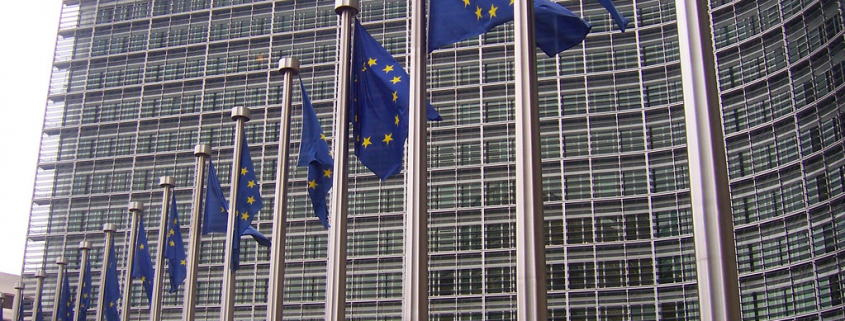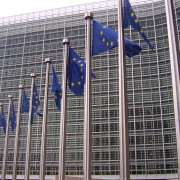COMMISSION IMPLEMENTING REGULATION (EU) 2022/19
of 7 January 2022
renewing the approval of the active substance Purpureocillium lilacinum strain 251 in accordance with Regulation (EC) No 1107/2009 of the European Parliament and of the Council concerning the placing of plant protection products on the market, and amending the Annex to Commission Implementing Regulation (EU) No 540/2011
(Text with EEA relevance)
THE EUROPEAN COMMISSION,
Having regard to the Treaty on the Functioning of the European Union,
Having regard to Regulation (EC) No 1107/2009, of the European Parliament and of the Council of 21 October 2009 concerning the placing of plant protection products on the market and repealing Council Directives 79/117/EEC and 91/414/EEC (1) and in particular Article 20(1) in conjunction with Article 22(1) thereof,
Whereas:
|
(1) |
Commission Directive 2008/44/EC (2) included Purpureocillium lilacinum strain 251 (formerly Paecilomyces lilacinus strain 251), as an active substance in Annex I to Council Directive 91/414/EEC (3). |
|
(2) |
Active substances included in Annex I to Directive 91/414/EEC are deemed to have been approved under Regulation (EC) No 1107/2009 and are listed in Part A of the Annex to Commission Implementing Regulation (EU) No 540/2011 (4). |
|
(3) |
The approval of the active substance Purpureocillium lilacinum strain 251 as set out in Part A of the Annex to Implementing Regulation (EU) No 540/2011 expires on 31 July 2022. |
|
(4) |
An application for the renewal of the approval of the active substance Purpureocillium lilacinum strain 251 was submitted in accordance with Article 1 of Commission Implementing Regulation (EU) No 844/2012 (5) within the time period provided for in that Article. |
|
(5) |
The applicant submitted the supplementary dossiers required in accordance with Article 6 of Implementing Regulation (EU) No 844/2012. The application was found to be complete by the rapporteur Member State. |
|
(6) |
The rapporteur Member State prepared a draft renewal assessment report in consultation with the co-rapporteur Member State and submitted it to the European Food Safety Authority (‘the Authority’) and the Commission on 30 July 2018. |
|
(7) |
The Authority made the supplementary summary dossier available to the public. The Authority also circulated the draft renewal assessment report to the applicant and to the Member States for comments and launched a public consultation on it. The Authority forwarded the comments received to the Commission. |
|
(8) |
On 21 August 2020, the Authority communicated to the Commission its conclusion (6) on whether Purpureocillium lilacinum strain 251 can be expected to meet the approval criteria provided for in Article 4 of Regulation (EC) No 1107/2009. |
|
(9) |
The Commission presented a renewal report and a draft Regulation regarding Purpureocillium lilacinum strain 251 to the Standing Committee on Plants, Animals, Food and Feed on 26 January 2021 and on 5 July 2021 respectively. |
|
(10) |
The Commission invited the applicant to submit its comments on the conclusion of the Authority and, in accordance with the third paragraph of Article 14(1) of Implementing Regulation (EU) No 844/2012, on the renewal report. The applicant submitted its comments, which have been carefully examined. |
|
(11) |
It has been established with respect to one or more representative uses of at least one plant protection product containing the active substance Purpureocillium lilacinum strain 251 that the approval criteria provided for in Article 4 of Regulation (EC) No 1107/2009 are satisfied. |
|
(12) |
The risk assessment for the renewal of the approval of the active substance Purpureocillium lilacinum strain 251 is based on a limited number of representative uses, which however do not restrict the uses for which plant protection products containing Purpureocillium lilacinum strain 251 may be authorised. |
|
(13) |
In accordance with Article 14(1) of Regulation (EC) No 1107/2009 in conjunction with Article 6 thereof and in the light of current scientific and technical knowledge, it is, however, necessary to provide for certain conditions. |
|
(14) |
Implementing Regulation (EU) No 540/2011 should therefore be amended accordingly. |
|
(15) |
Commission Implementing Regulation (EU) 2021/745 (7) extended the approval period of Purpureocillium lilacinum strain 251 to 31 July 2022 in order to allow the renewal process to be completed before the expiry of the approval period of that active substance. However, given that a decision on renewal has been taken ahead of that extended expiry date, this Regulation shall apply as soon as possible. |
|
(16) |
The measures provided for in this Regulation are in accordance with the opinion of the Standing Committee on Plants, Animals, Food and Feed, |
HAS ADOPTED THIS REGULATION:
Article 1
Renewal of the approval of the active substance
The approval of the active substance Purpureocillium lilacinum strain 251 is renewed as set out in Annex I.
Article 2
Amendments to Implementing Regulation (EU) No 540/2011
The Annex to Implementing Regulation (EU) No 540/2011 is amended in accordance with Annex II to this Regulation.
Article 3
Entry into force and date of application
This Regulation shall enter into force on the twentieth day following that of its publication in the Official Journal of the European Union.
It shall apply from 1 March 2022.
This Regulation shall be binding in its entirety and directly applicable in all Member States.
Done at Brussels, 7 January 2022.
For the Commission
The President
Ursula VON DER LEYEN
(1) OJ L 309, 24.11.2009, p. 1.
(2) Commission Directive 2008/44/EC of 4 April 2008 amending Council Directive 91/414/EEC to include benthiavalicarb, boscalid, carvone, fluoxastrobin, Paecilomyces lilacinus and prothioconazole as active substances (OJ L 94, 5.4.2008, p. 13).
(3) Council Directive 91/414/EEC of 15 July 1991 concerning the placing of plant protection products on the market (OJ L 230, 19.8.1991, p. 1).
(4) Commission Implementing Regulation (EU) No 540/2011 of 25 May 2011 implementing Regulation (EC) No 1107/2009 of the European Parliament and of the Council as regards the list of approved active substances (OJ L 153, 11.6.2011, p. 1).
(5) Commission Implementing Regulation (EU) No 844/2012 of 18 September 2012 setting out the provisions necessary for the implementation of the renewal procedure for active substances, as provided for in Regulation (EC) No 1107/2009 of the European Parliament and of the Council concerning the placing of plant protection products on the market (OJ L 252, 19.9.2012, p. 26).
(6) EFSA (European Food Safety Authority), 2020. Conclusion on the peer review of the pesticide risk assessment of the active substance Purpureocillium lilacinum strain 251. EFSA Journal 2020;18(9):6238. Available online: www.efsa.europa.eu
(7) Commission Implementing Regulation (EU) 2021/745 of 6 May 2021 amending Implementing Regulation (EU) No 540/2011 as regards the extension of the approval periods of the active substances aluminium ammonium sulphate, aluminium silicate, beflubutamid, benthiavalicarb, bifenazate, boscalid, calcium carbonate, captan, carbon dioxide, cymoxanil, dimethomorph, ethephon, extract from tea tree, famoxadone, fat distilation residues, fatty acids C7 to C20, flumioxazine, fluoxastrobin, flurochloridone, folpet, formetanate, gibberellic acid, gibberellins, heptamaloxyloglucan, hydrolysed proteins, iron sulphate, metazachlor, metribuzin, milbemectin, Paecilomyces lilacinus strain 251, phenmedipham, phosmet, pirimiphos-methyl, plant oils/rape seed oil, potassium hydrogen carbonate, propamocarb, prothioconazole, quartz sand, fish oil, repellents by smell of animal or plant origin/sheep fat, S-metolachlor, Straight Chain Lepidopteran Pheromones, tebuconazole and urea (OJ L 160, 7.5.2021, p. 89).
ANNEX I
|
Common Name, Identification Numbers |
IUPAC Name |
Purity (1) |
Date of approval |
Expiration of approval |
Specific provisions |
||||
|
Purpureocillium lilacinum strain 251 |
Not applicable |
No relevant impurities |
1 March 2022 |
28 February 2037 |
For the implementation of the uniform principles as referred to in Article 29(6) of Regulation (EC) No 1107/2009, the conclusions of the review report on Purpureocillium lilacinum strain 251, and in particular Appendices I and II thereto, shall be taken into account. In this overall assessment Member States shall pay particular attention to:
Conditions of use shall include risk mitigation measures, where appropriate. |
(1) Further details on the identity and the specification of the active substance are provided in the renewal report.
(2) https://ec.europa.eu/food/sites/food/files/plant/docs/pesticides_ppp_app-proc_guide_phys-chem-ana_microbial-contaminant-limits.pdf
ANNEX II
The Annex to Commission Implementing Regulation (EU) No 540/2011 is amended as follows:
|
(1) |
in Part A, entry 167 on Purpureocillium lilacinum strain 251 is deleted; |
|
(2) |
in Part B, the following entry is added:
|
(*1) https://ec.europa.eu/food/sites/food/files/plant/docs/pesticides_ppp_app-proc_guide_phys-chem-ana_microbial-contaminant-limits.pdf ’
Source: EU Pesticide database
Image source: “Banderas Europeas en el Berlaymont (Bruselas)” by Amio Cajander. is marked with CC BY-SA 2.0.



